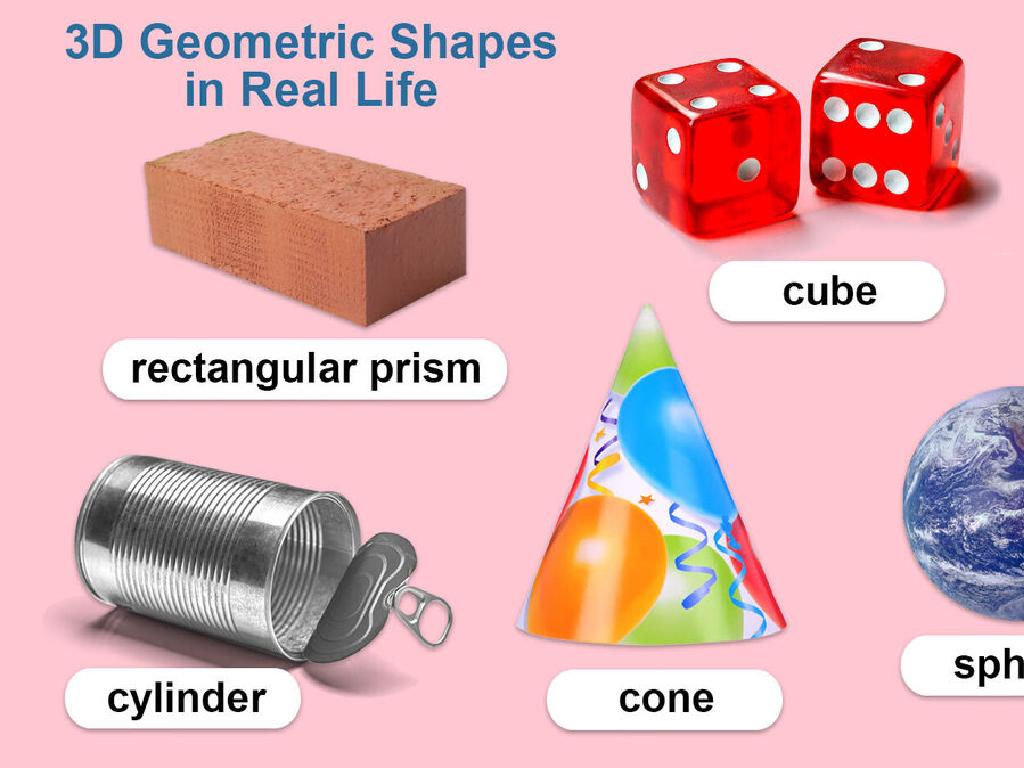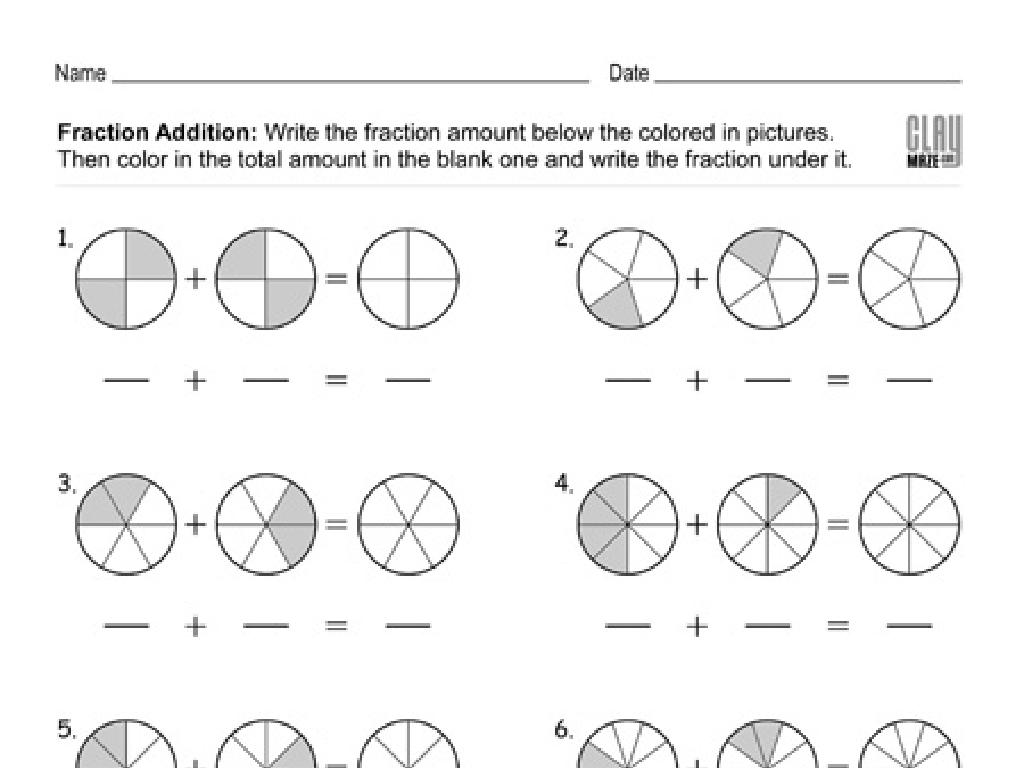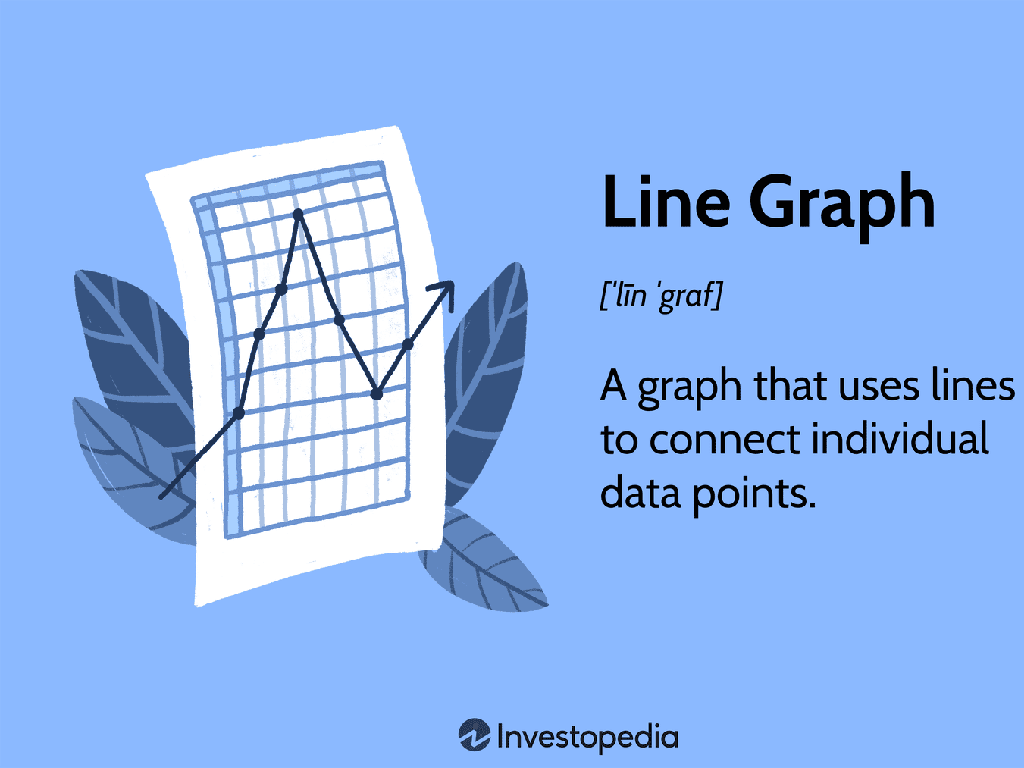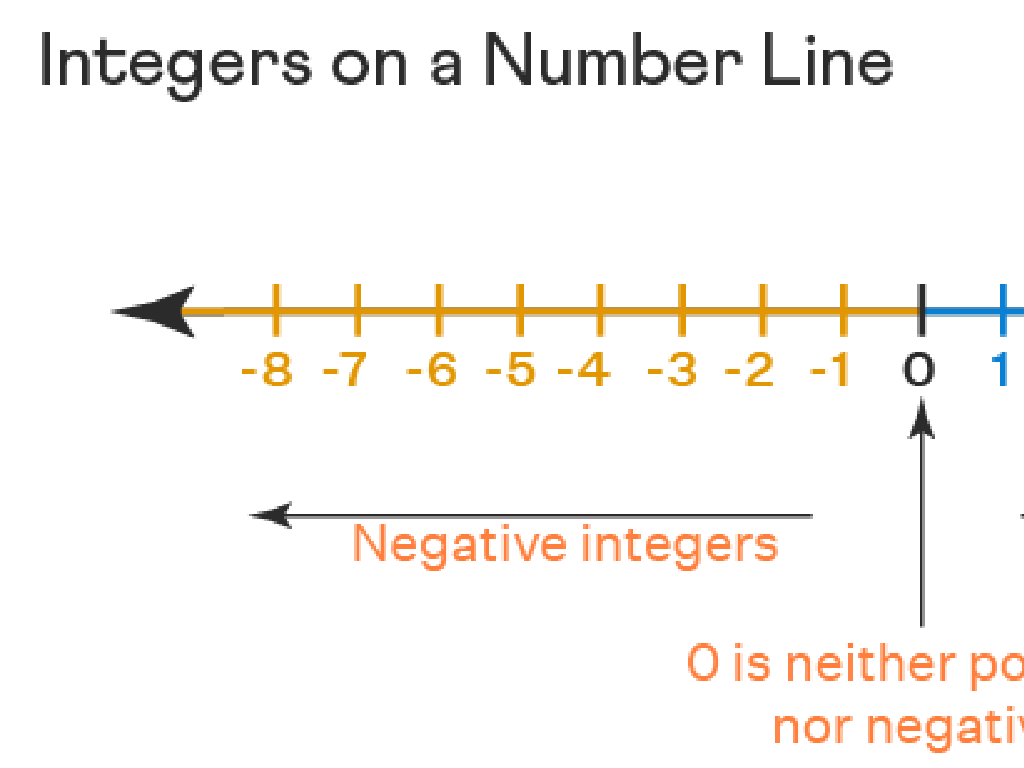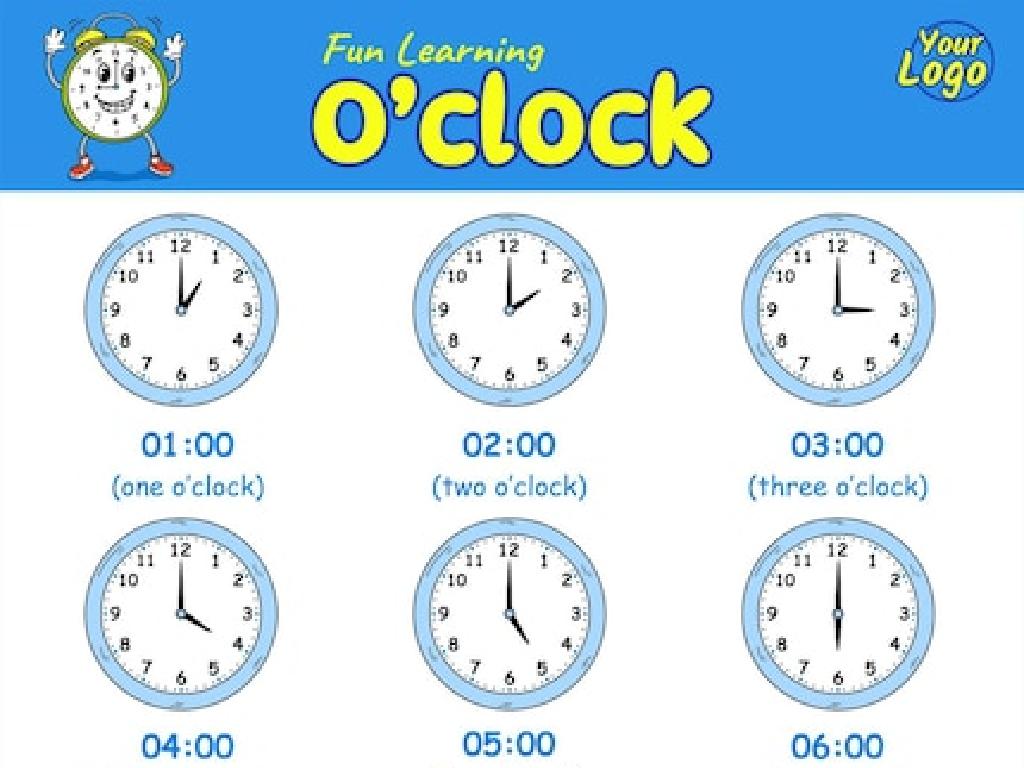Light And Heavy
Subject: Math
Grade: First grade
Topic: Measurement
Please LOG IN to download the presentation. Access is available to registered users only.
View More Content
Exploring Light and Heavy Objects
– Greet our bright minds!
– Learn about light vs. heavy
– What objects are easy to lift? Those are light!
– Comparing object weights
– Use hands to feel which is heavier or lighter
– Fun activities ahead!
– Get ready to play with scales and objects in class
|
This slide introduces the concept of weight and the comparison between light and heavy objects to first graders. Start the lesson with a warm greeting to engage the students. Explain that some objects are easy to lift because they are light, while others are hard because they are heavy. Encourage the children to use their hands to feel the difference in weight between two objects. Prepare a set of activities where students can use scales to weigh different objects and determine which are light and which are heavy. This hands-on experience will help solidify their understanding of the concept.
Understanding Light Objects
– ‘Light’ means easy to lift
– Imagine light things like feathers
– A feather or a leaf is very light
– Examples of light objects
– Toys, paper, and bubbles are light
– Comparing light and heavy items
– Use a scale to see which is lighter
|
This slide introduces the concept of ‘light’ as a property of objects that makes them easy to lift. Start by asking students to think of items they consider light, such as a feather, to make the concept relatable. Show examples of light objects that are common in their daily lives, like toys or pieces of paper. Encourage the students to compare these with heavier items to understand the difference. You can bring a balance scale to class and have students weigh different objects to see which ones are lighter, providing a practical and interactive way to grasp the concept of lightness in objects.
Understanding Heavy Objects
– What does ‘heavy’ mean?
– Heavy: having a lot of weight
– Examples of heavy things
– An elephant is heavy and hard to lift
– Comparing heavy and light
– Compare a backpack to a pencil
– Class activity: Find heavy items
|
This slide introduces the concept of ‘heavy’ to first graders by defining it as having a lot of weight, which makes something difficult to lift. Use familiar examples like an elephant to illustrate the idea of heavy objects. Encourage students to think of other heavy items they know. Introduce the concept of comparison by contrasting heavy and light objects, such as a backpack versus a pencil. For the class activity, ask students to look around the classroom or their homes for items they consider heavy and bring them to the next class or discuss. This will help them apply the concept of heavy in a practical context and understand that weight is a measurable attribute.
Comparing Light and Heavy Objects
– Learn to use a scale
– Up means lighter, down means heavier
– Compare everyday objects
– For example, compare a pencil to an apple
– Discover light and heavy
|
This slide introduces the concept of weight and how to compare the mass of different objects using a scale. Explain to the students that when using a balance scale, the side that goes up is lighter, and the side that goes down is heavier. Use relatable objects such as a pencil and an apple to demonstrate this concept. Encourage the students to think of other objects they could compare. Plan a hands-on activity where students can use a classroom scale to compare various items, fostering an interactive and engaging learning experience. This will help them understand the practical application of comparing weights and reinforce the concept of light and heavy.
Exploring Light and Heavy Objects
– Guessing game with objects
– Touch and feel the weight
– How does each object feel in your hands?
– Safety first: ask for help
– Understanding weight differences
– Learn to differentiate objects by their weight
|
This slide introduces a hands-on activity to help first graders understand the concept of weight and the difference between light and heavy objects. Start by showing a variety of objects to the class and encourage them to guess which ones are light and which are heavy. Then, allow the students to touch and hold the objects, under supervision, to feel their weight. Remind them of the importance of safety and to ask for help if an object seems too heavy to lift. This activity will help students develop a tactile understanding of weight and learn to compare the heaviness of different objects. Prepare a set of diverse objects in advance, ensuring they are safe and appropriate for the age group. Consider including 4-5 different activities, such as comparing two objects, ordering several objects by weight, and grouping objects into ‘light’ and ‘heavy’ categories.
Class Activity: Light or Heavy?
– Pair up with a classmate
– Compare objects together
– Decide: Is it light or heavy?
– Use your hands to feel the weight
– Share findings with the class
|
In this activity, students will engage in a hands-on learning experience to understand the concept of weight. They will work in pairs to foster teamwork and communication skills. Provide a variety of objects for the students to compare, such as pencils, erasers, books, and water bottles. Encourage them to use their hands to feel which objects are lighter or heavier. After the comparison, each pair will discuss their findings and present to the class, enhancing their public speaking abilities. Possible activities for different pairs could include comparing classroom items, comparing items from their lunchboxes, or using a balance scale if available to see the weight difference visually.
Wrapping Up: Light and Heavy
– Congratulations on your hard work!
– Understanding light vs. heavy
– We can tell by lifting or using a scale
– Practice makes perfect
– Continue exploring at home
– Compare everyday items to learn more
|
Great job leading the class through today’s lesson on understanding the concept of light and heavy objects. Reinforce the idea that with practice, they’ll get even better at distinguishing between the two. Encourage them to keep exploring this concept at home by comparing the weight of different objects, like toys or fruits. Remind them that they can use their hands to lift objects or use a scale if they have one. Celebrate their effort and curiosity, and let them know that these skills are the building blocks for future measurement lessons.

